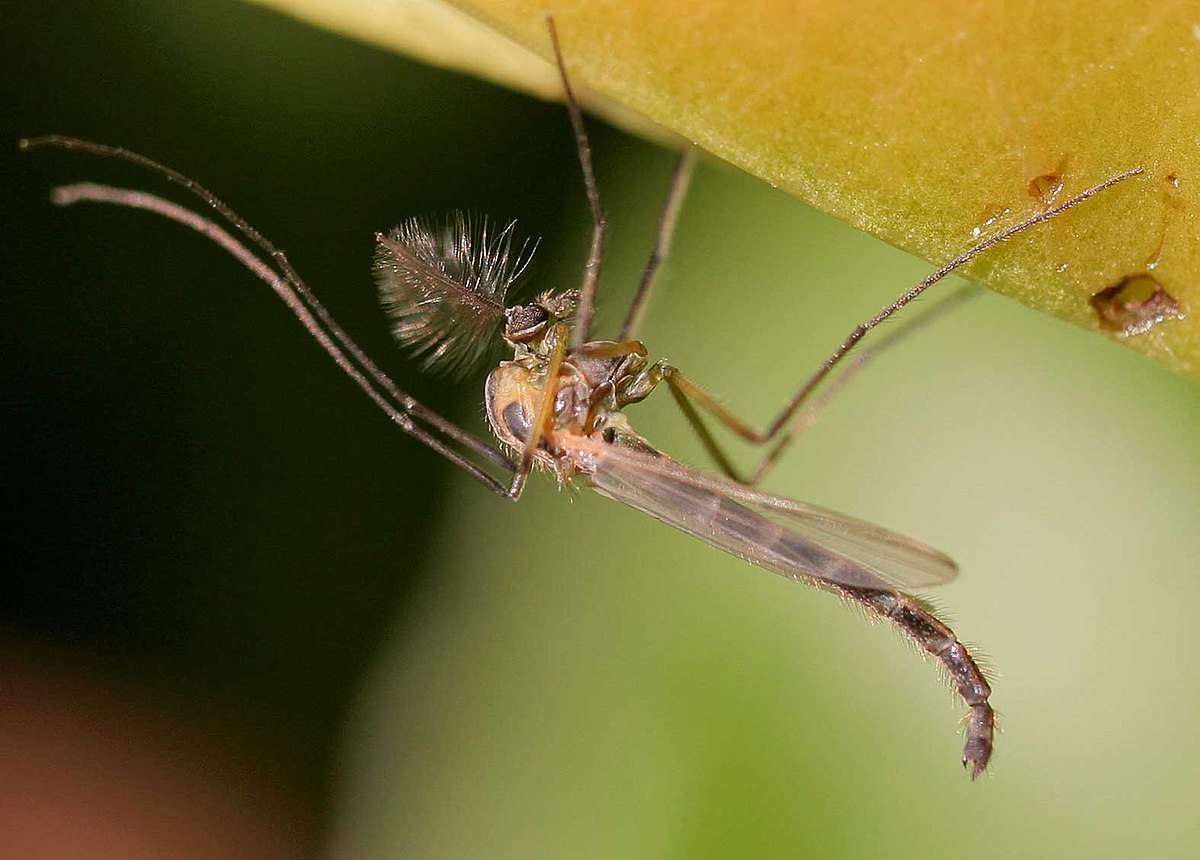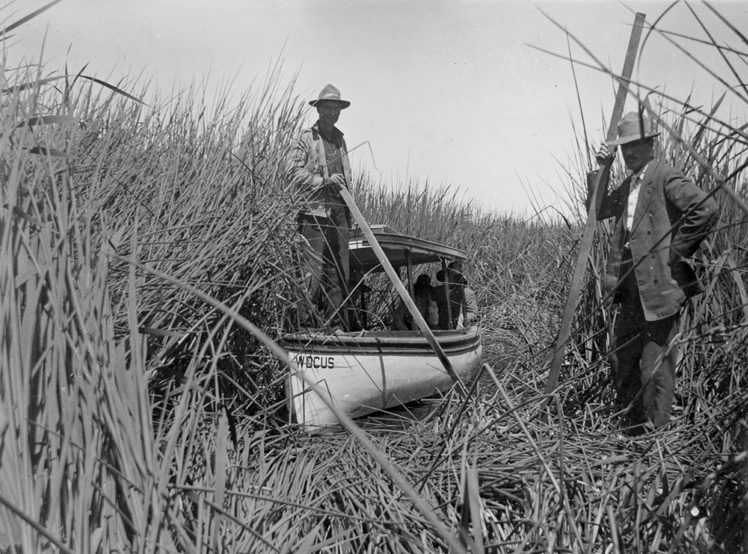Upper Klamath Lake's nutrient-rich waters support an array of aquatic and terrestrial organisms, ranging from bacteria and algae to fish and other vertebrates, including birds. The many invertebrates include the Chironomidae, an insect family of nonbiting midges, in the fly Order Diptera. In spring and early summer enormous numbers of adult Klamath midges—known locally as "little green bugs"—appear near evening on their nuptial flight.
The "Klamath" midge was first described by Malloch in 1915 from its type locality, Kaysville, Utah. Hence its scientific name, Chironomus utahensis (meaning "citizen of Utah"). Its common name Klamath midge (or little green bug, for that matter) has no legal scientific standing, and likely comes from its pestiferous nature near the relatively large human population of Klamath Falls, Oregon. This western midge of lakes, reservoirs, ponds, and playas ranges from Alberta, Saskatchewan, and Manitoba south to California and New Mexico, including eastern Oregon.
When not flying in huge, annoying swarms as mating adults, the midge spends its larval and pupa stages quietly in the nutrient-rich lake bottom. There they are an important part of the lake's food web, serving as food for fish. The larval stage, called a bloodworm, is a popular tropical fish food for aquarists.
Although adults superficially resemble mosquitoes, they are quite different. They do not bite or carry disease, and when they alight, they raise their front legs and not their hind legs as mosquitoes do. They do not present a health risk, but because of their numbers they are a nuisance in swarms of thousands, which can clog car radiators, obscure windshields, and foul electric bug zappers to the point of shorting out.
Insects, no matter how important ecologically, can be a bother. Efforts to control their numbers through modern chemistry have frequently been attempted, but no major efforts have been made to control the Klamath midge in Oregon. If the midge is an aggravation, try to find some solace in the important role it plays in the biology of Upper Klamath Lake and the production of trophy trout.
-
![]()
Klamath midge.
Courtesy Klamath Vector Control District -
![]()
Upper Klamath Lake.
Oregon Historical Society Research Library, Oregon Journal, photo file 631
Related Entries
Related Historical Records
Map This on the Oregon History WayFinder
The Oregon History Wayfinder is an interactive map that identifies significant places, people, and events in Oregon history.
Further Reading
Armitage P. D., P. S. Cranston, and L. C. V. Pinder. The Chironomidae: Biology and Ecology of Non-Biting Midges. London: Chapman & Hall, 1995.
Sublette, James E., Lawrence E. Stevens, and Joseph P. Shannon. "Chironomidae (Diptera) of the Colorado River, Grand Canyon, Arizona, USA, I: Systematics and Ecology." The Great Basin Naturalist, 58:2 (April 1998), 97-197. https://ojs.lib.byu.edu/ojs/index.php/wnan/article/viewFile/834/702.



